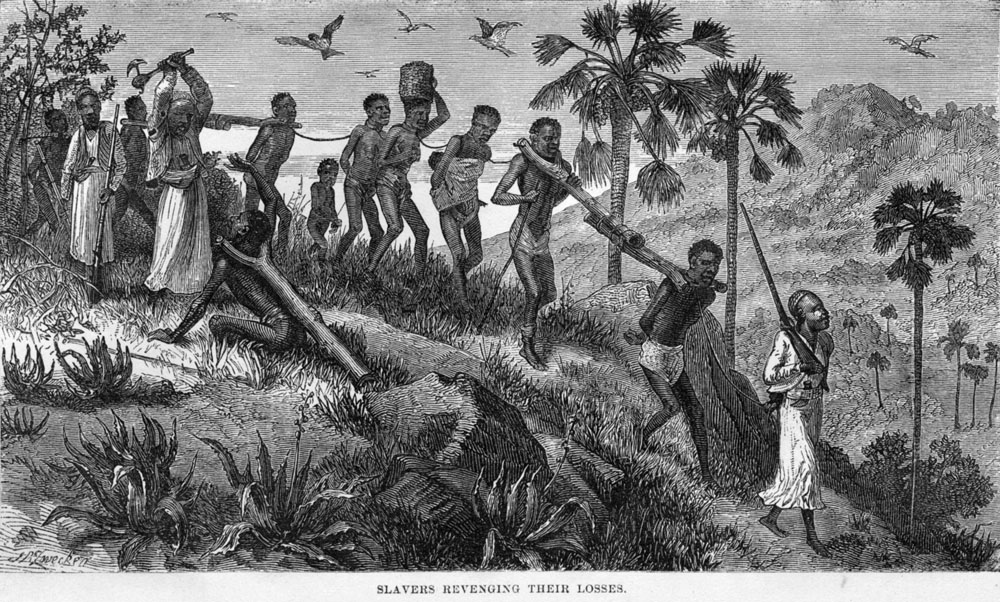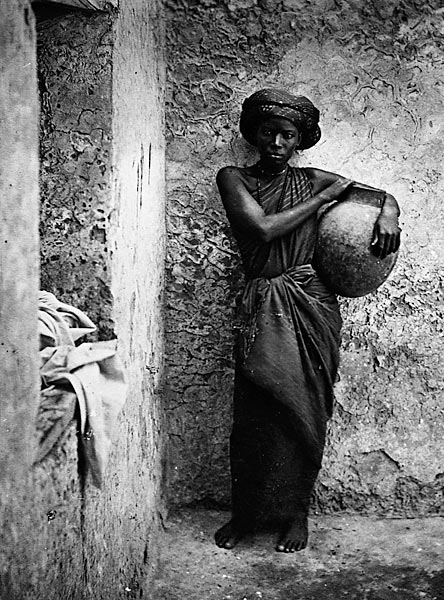Indian Ocean slave trade
The
Indian Ocean slave trade, sometimes known as the
East African slave trade, involved the capture and transportation of predominately
sub-Saharan African slaves along the coasts, such as the
Swahili Coast and the
Horn of Africa, and through the
Indian Ocean. Affected areas included
East Africa,
Southern Arabia, the west coast of
India, Indian ocean islands (including
Madagascar) and southeast Asia including
Java.
The source of slaves was primarily in
sub-Saharan Africa, but also included
North Africa and the Middle East, Indian Ocean islands, as well as South Asia. While the slave trade in the Indian Ocean started 4,000 years ago, it expanded significantly in
late antiquity (1st century CE) with the rise of
Byzantine and
Sassanid trading enterprises.
Muslim slave trading started in the
7th century, with the volume of trade fluctuating with the rise and fall of local powers. Beginning in the 16th century, slaves were
traded to the Americas, including
Caribbean colonies, as
Northern,
Western, and
Southern European powers became involved in the slave trade. Trade declined with the abolition of slavery in the 19th century.
The East African slave trade flourished greatly from the second half of the nineteenth century, when
Said bin Sultan, an Oman Sultan, made Zanzibar his capital and expanded international commercial activities and plantation economy in cloves and coconuts. During this period demands for slaves grew drastically. The slaves were needed for local use mainly to work in plantations in Zanzibar and for export. Sultan Seyyid (seyyid is an Arabic title for Lord) Said made deliberate efforts to "revive old Arab-caravan trade" with mainland Africa, which became the major source of slaves.
[75]
Said bin Sultan took six major initiatives which facilitated growth and expansion of his commercial empire. He firstly introduced a new currency "Maria Theresa Dollar" to supplement the existing "Spanish Crown", which simplified commercial activities. Secondly, he introduced a harmonized 5% import duty for any merchandise entering into his empire. He abolished export duties. Thirdly, he took advantage of Zanzibar's and Pemba's fertile soil to establish plantations of coconut and cloves. Fourthly, he revitalised and extended the "old Arab-caravan trade" with mainland East Africa to acquire slaves and ivory. He signed commercial treaties with western capitalist countries, such as the United States of America in 1833, with Great Britain in 1839, and France in 1844. Finally, he invited Asian merchants and experts who dealt with financial matters.
[76][77]
It was not until 1873 that Sultan Seyyid Barghash of Zanzibar, under pressure from Great Britain, signed a treaty that made the slave trade in his territories illegal.

en.m.wikipedia.org
Let me guess the Sultan of Oman was a Jew you Nazi b*stard


 how about telling israel to kick rocks and stand the fukk down... they are the problem in this situation. it's wild...the media and govt sources being folded to be on israel's side since this been happening is sick. truth is the first casualty of war.
how about telling israel to kick rocks and stand the fukk down... they are the problem in this situation. it's wild...the media and govt sources being folded to be on israel's side since this been happening is sick. truth is the first casualty of war.









